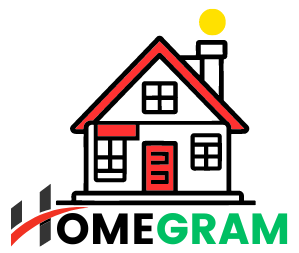Mortgage Rates This Week: Three Big Banks Slash Rates, One Hits 3.99% on 5-Year Fixed!

Table of Contents
Mortgage rates this week: Introduction
In a significant move impacting the Canadian housing market, three of the country’s major banks have reduced their mortgage rates this week. Notably, one of these institutions has introduced a 5-year fixed rate at an attractive 3.99%. This development presents potential opportunities for homebuyers and those considering refinancing. In this article, we delve into the details of these rate cuts, the factors influencing them, and their potential implications for consumers and the broader economy.
Understanding the Recent Mortgage Rate Cuts
Which Banks Have Reduced Their Rates?
This week, three prominent Canadian banks—CIBC, TD Bank, and BMO—announced reductions in their fixed mortgage rates. Among these, CIBC made a notable move by lowering its high-ratio 5-year fixed rate to 3.99%, breaking the 4.00% threshold and setting a competitive benchmark among the Big Six banks.
Factors Influencing the Rate Reductions
Several factors have contributed to these mortgage rate cuts:
Bond Market Fluctuations
The bond market has experienced significant volatility recently. After peaking at 3.29% in mid-January, 5-year Canada bond yields dropped to a three-year low of 2.50% earlier this week, coinciding with anticipated tariff implementations. Although yields have since rebounded to 2.69% following a delay in tariffs, the overall downward trend has influenced banks to adjust their fixed mortgage rates accordingly.
Economic Uncertainty Due to Tariff Threats
The broader economic landscape has been marked by uncertainty, particularly due to U.S. President Donald Trump’s tariff threats. These potential trade tensions have led to cautious economic forecasts, prompting financial institutions to adopt more competitive mortgage rates to attract borrowers amid the uncertainty.
Labour Market Dynamics
Canada’s labour market has shown signs of slowing down. In February, the unemployment rate remained steady at 6.6%, with a marginal addition of only 1,100 jobs, a sharp decline from the 76,000 jobs added in January. This stagnation may have influenced banks to lower mortgage rates to stimulate borrowing and support economic activity.
Implications for Homebuyers and the Housing Market
Opportunities for Prospective Homebuyers
The reduction in mortgage rates presents several advantages for potential homebuyers:
Increased Affordability
Lower interest rates can lead to reduced monthly mortgage payments, making homeownership more accessible to a broader range of buyers. For instance, securing a 5-year fixed mortgage at 3.99% can result in significant interest savings over the loan term compared to higher rates.
Enhanced Purchasing Power
With reduced borrowing costs, buyers may qualify for larger loan amounts, allowing them to consider properties that were previously out of reach. This increased purchasing power can stimulate activity in various segments of the housing market.
Considerations for Existing Homeowners
Current homeowners may also benefit from the recent rate cuts:
Refinancing Opportunities
Homeowners with existing mortgages at higher interest rates might consider refinancing to take advantage of the new, lower rates. Refinancing can lead to reduced monthly payments and overall interest savings, improving household cash flow.
Impact on Variable-Rate Mortgages
While the recent cuts pertain to fixed-rate mortgages, those with variable-rate mortgages should monitor the market closely. Changes in fixed rates can sometimes signal upcoming adjustments in variable rates, influencing future payment amounts.
Expert Insights on the Rate Reductions
Industry experts have weighed in on the recent mortgage rate cuts:
David Larock’s Perspective
David Larock of Integrated Mortgage Planners suggests that banks are reacting to sustained changes in the bond market rather than short-term fluctuations. He notes that in volatile economic environments, lenders may delay adjusting fixed mortgage rates until they observe long-term trends.
Tracy Valko’s Observations
Tracy Valko of Valko Financial believes that banks are adopting aggressive rate reductions to attract buyers before potential economic downturns. She anticipates a brief surge in housing market activity, followed by a possible slowdown if trade tensions escalate into a full-blown trade war.
Pros and Cons of the Current Mortgage Rate Environment
Pros
- Affordability: Lower rates make mortgages more affordable, enabling more individuals to enter the housing market.
- Economic Stimulus: Increased borrowing can stimulate economic growth, benefiting related industries such as construction and retail.
- Refinancing Benefits: Existing homeowners can reduce their mortgage costs through refinancing at lower rates.
Cons
- Economic Uncertainty: The factors leading to rate cuts, such as potential trade wars, could negatively impact the broader economy.
- Risk of Overleveraging: Lower rates might encourage some borrowers to take on more debt than they can manage, posing financial risks.
- Pressure on Lenders: Reduced rates can compress profit margins for banks, potentially leading to stricter lending criteria.
Frequently Asked Questions (FAQs)
What is a high-ratio mortgage?
A high-ratio mortgage is one where the borrower makes a down payment of less than 20% of the property’s purchase price. In Canada, such mortgages require mortgage default insurance to protect the lender against potential default.
How do bond yields affect mortgage rates?
Fixed mortgage rates are often influenced by government bond yields. When bond yields decline, banks’ borrowing costs decrease, allowing them to offer lower mortgage rates to consumers.
Should I choose a fixed or variable-rate mortgage in the current environment?
The decision between fixed and variable-rate mortgages depends on individual financial situations and risk tolerance. Fixed rates offer stability with set payments, while variable rates can fluctuate with market conditions. Consulting with a mortgage advisor can help determine the best option.
Conclusion
The recent mortgage rate reductions by major Canadian banks, including the notable 5-year fixed rate at 3.99%, present significant opportunities for both prospective and current homeowners. These changes, influenced by bond market fluctuations, economic uncertainties, and labour market dynamics, underscore the importance of staying informed and consulting with financial professionals when making mortgage decisions.
Popular










